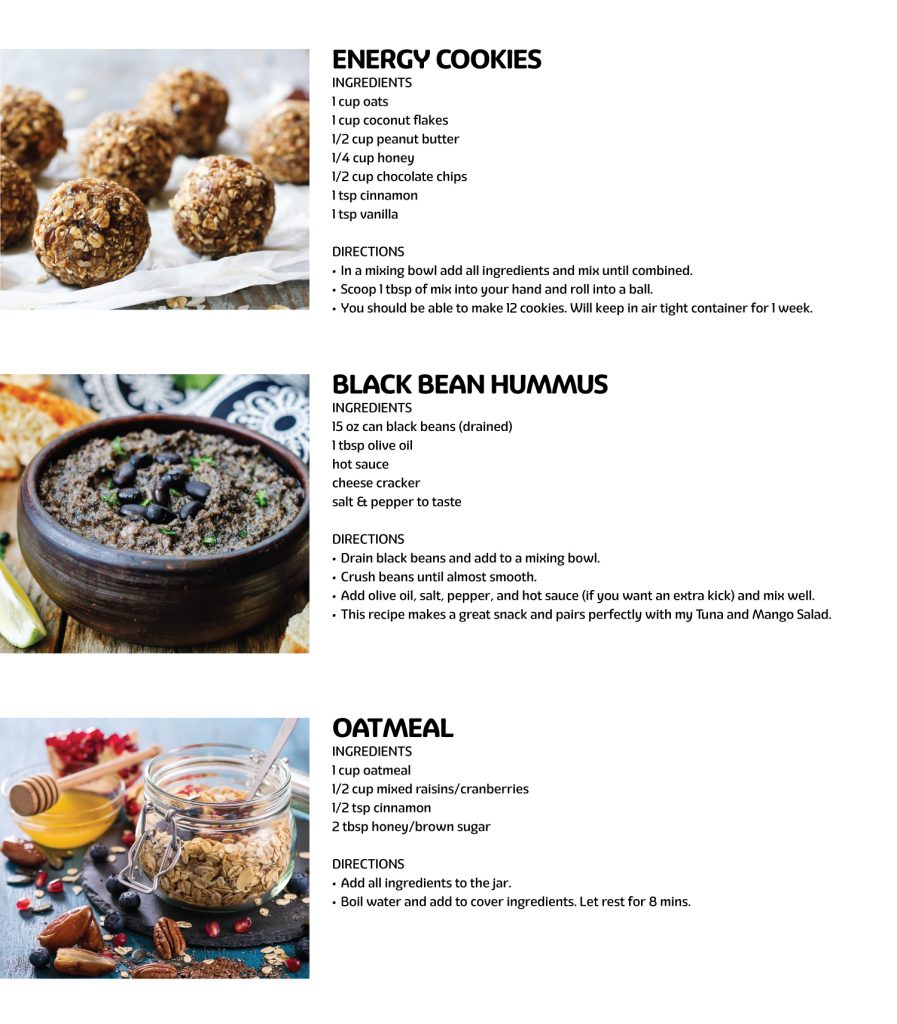Hurricane Fact:
Many processed items are loaded with salt and can encourage dehydration. Also be wary of treats with added sugar (we’re looking at you, toaster pastries). Smart choices include baked veggie chips, multigrain tortilla chips, pita chips, flavored whole-wheat crackers, and dark chocolate candy.
– Cooking Light
Food Safety Considerations
• Freeze containers of water for ice to help keep food cold in the freezer, refrigerator, or coolers in case the power goes out. If your normal water supply is contaminated or unavailable, the melting ice can also be used for rinsing or where water is needed. (Boiling may be necessary if you need to
consume the melted water).
• The refrigerator will keep food cold for about 4 hours if it is unopened.
• A full freezer will keep the temperature for approximately 48 hours (24 hours if it is half full) if the door remains closed.
• Food containers that are not waterproof include those with screw-caps, snap lids, pull tops, and crimped caps.
• Discard cardboard juice/milk/baby formula boxes and home canned foods if they have come in contact with flood water, because they cannot be effectively cleaned and sanitized.
Cooking After a Storm
by Chef Tanya Foster of Tanya’s Kitchen
Living in the Caribbean has its perks, but with the beauty and laid-back lifestyle comes the dreaded hurricane season. Each year, we plan, we prepare our emergency kits, we safeguard our homes, but do we ever really plan out what we are going to eat after the storm?
We shouldn’t be relegated to a diet of canned corned beef and crackers just because we have no power! The possibilities are, almost, endless when it comes to eating after a storm. Many people think – I have no power, now what? Shelf stable is what, and I’ve got some tips to keep you sane while you eat your way through post-hurricane life.
How do I shop?
When you shop for a hurricane, you have to put yourself in the “I’m hungry and I have no power” mindset. Don’t just think about cans and boxes, think about ingredients and what you can create to feed your family for a number of days. This may be the most difficult part to preparing meals after a storm, but it is the most crucial.
Figure out what flavor combinations you like, and run with it. Do you like black beans? Great! Make a crushed black bean dip to eat with carrots or a black bean wrap with canned chicken and corn.
Once you’ve gotten the (conceptually) hard part out of the way, you can then move on to bigger feats, like weathering the storm.
Can I use perishables from the fridge?
For a short period, yes. Once you lose power, keep your fridge closed! The more you open it, the faster it will lose it’s temperature making your food items susceptible to bacteria growth. Cull your fridge prior to a storm, and only keep food items you plan to use within a day or two – fruits and vegetables, cheese, etc.
What can’t I use after a storm?
Make sure you keep away from any non-canned or loosely sealed food items that came in contact with flood waters. These waters often carry bacteria and other germs which can get onto your food. Canned and sealed goods that came into contact with flood waters should be sanitized with a mixture of bleach and water before consuming.
TIP: Keep all your non-perishable food items in a watertight storage container or high on a counter away from potential flooding areas.
What recipes do you recommend?
I’ve put together a few quick, easy recipes to try after a storm. Some require hot water, some require a grill or portable butane stove, but that just adds to the fun of cooking without power, right?

Be as creative as you can with cooking after a storm, and get your family involved! Cooking without power will take your mind off things for a while, and can provide a fun escape for the whole family. You can even make it a competition – who can come up with the tastiest meal with only a few ingredients!
Discover your inner chef!

